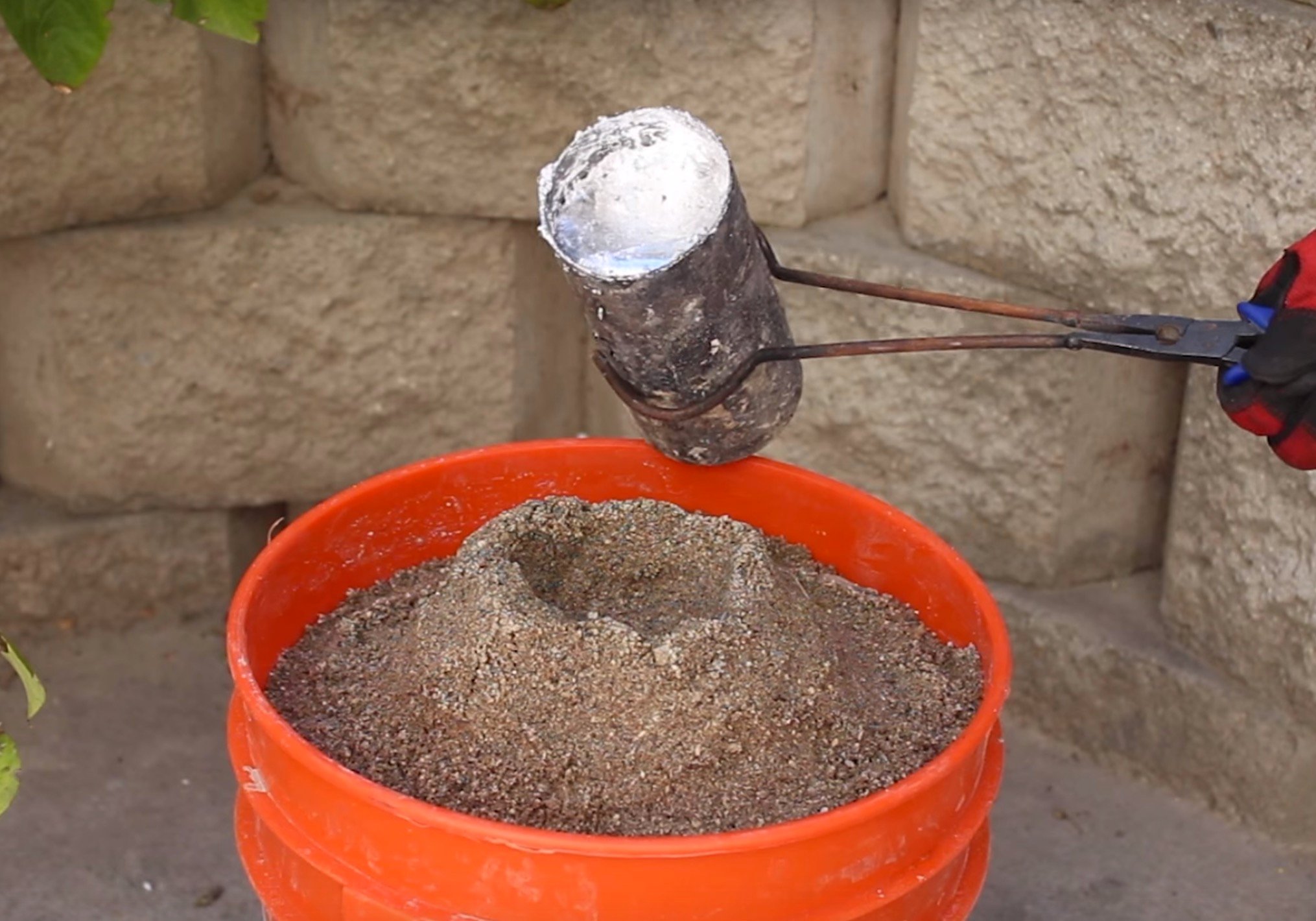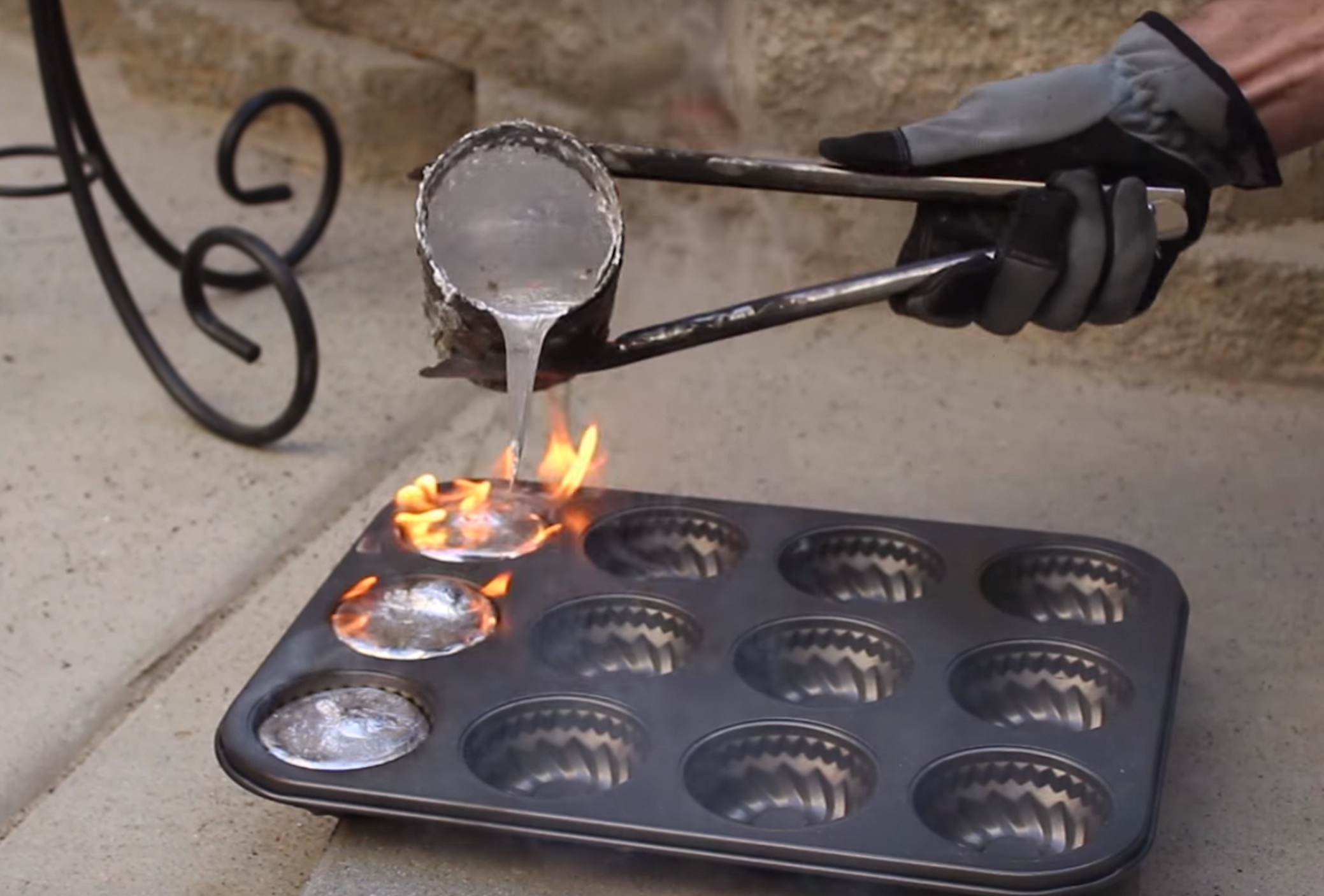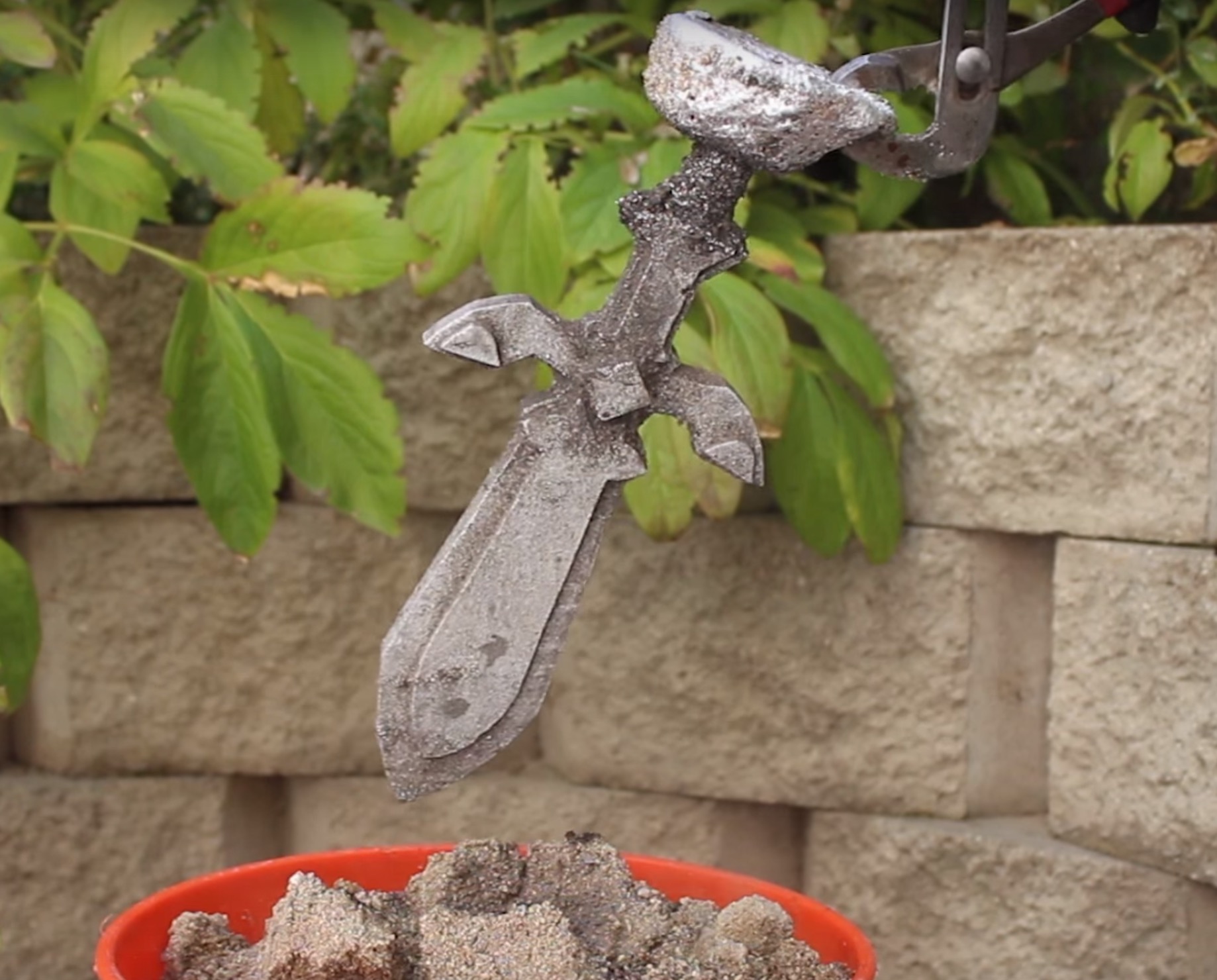
Many people have 3D printers capable of producing plastic objects, but very few have a metal 3D printer. But with your own foundry, it’s almost as if you did.
Yes, metal 3D printers are spectacularly expensive, far more than most people could ever afford. However, the standard technique for “printing” in metal when you don’t have a metal 3D printer is to use metal casting instead.

You simply produce a mold of the intended shape using variations of the lost-wax process, and pour in liquid metal. After cooling, you remove a metal object in the exact shape you required. We’ve previously written about the lost wax process, but one detail was not explained: how, exactly, do you get liquid metal for casting?
A video of how to make and use a “mini metal foundry” explains all you’ll need, at least to make liquid aluminum. In the video, Grant Thompson uses the foundry to melt common aluminum drink cans to produce “muffins” of aluminum.

These aluminum “muffins” can be pre-made for later use when casting. They can be re-melted and then poured into molds to produce terrific aluminum objects, such as this cartoony sword here:

But if you’re going to actually build such a foundry, I would strongly advise caution, as this is a very hot process with many dangerous steps. Do not attempt to do this indoors, unless you’re in a fully ventilate and fireproof workshop!
Via YouTube

